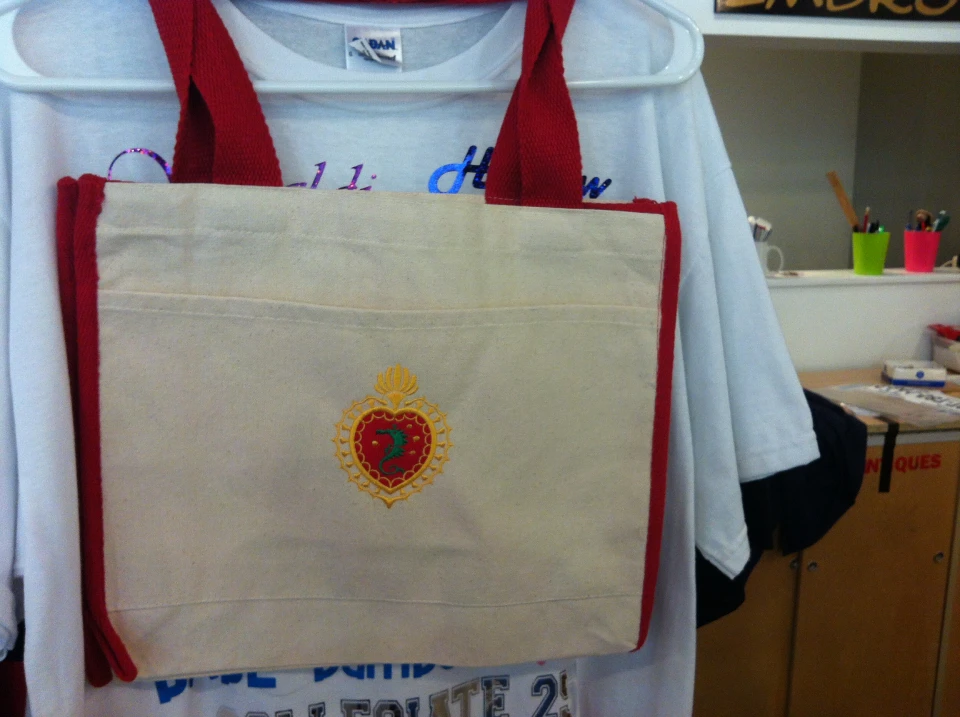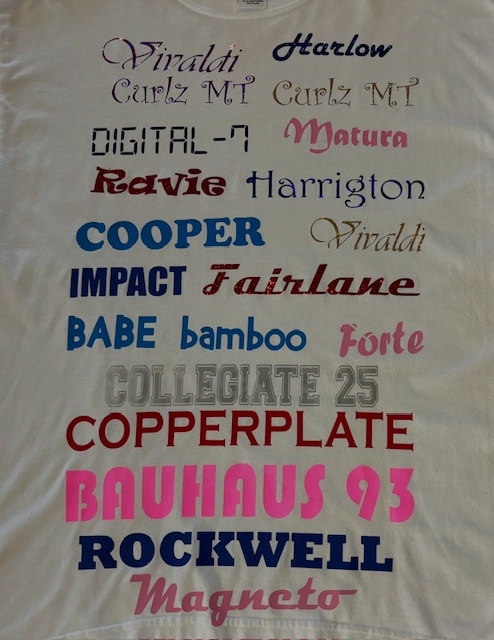Custom Embroidery for All Your Requirements - From School Uniforms to Sports Teams
Custom Embroidery for All Your Requirements - From School Uniforms to Sports Teams
Blog Article
The Art of Customized Needlework: Opening the Keys to Creating Special and Unforgettable Designs
The keys to developing custom needlework designs that mesmerize the eye and leave a long-term perception lie in a delicate balance of strategy, imagination, and attention to information. As we dig into the globe of custom embroidery, we uncover the nuanced interaction in between string choice, sew complexity, and layout customization that elevates a mere garment to a job of art.
Picking the Right Needlework Threads
When picking embroidery strings, what vital elements should you consider to guarantee the best outcomes for your personalized designs? The selection of needlework string is vital in identifying the last outcome of your embroidered design.
Additionally, the weight or thickness of the string plays a substantial duty in the look of the embroidery. Thicker threads can add measurement and texture to your design, while finer strings are perfect for elaborate details and tiny text. In addition, taking into consideration the color fastness and washability of the string is important to make sure that your personalized designs preserve their top quality and vibrancy with time. By thoroughly assessing these aspects and picking high-quality threads that satisfy your specific requirements, you can improve the visual appeal and long life of your embroidered creations.
Checking Out Different Stitch Methods
To look into the world of 'Exploring Various Stitch Methods', one should understand the intricacies and nuances that each stitching technique gives the art of needlework. Different stitch techniques not just include visual interest however additionally add to the overall texture and measurement of the design. One preferred stitch technique is the satin stitch, which includes closely jam-packed parallel stitches to develop a smooth and shiny surface area, perfect for filling out forms and creating strong lays out.
On the other hand, the backstitch is a versatile method usually used for describing and adding fine information. It entails stitching backward to create a strong line of needlework. Furthermore, the French knot stitch adds a tactile element to designs, excellent for developing distinctive accents like flower facilities or ornamental touches.
Checking out different stitch strategies enables embroiderers to play with light, shadow, and deepness within their layouts, elevating the aesthetic appeal and imaginative quality of their needlework projects. By grasping various sewing methods, one can open limitless possibilities for creating unique and remarkable custom needlework items.
Incorporating Personalized Design Aspects
Having discovered the details of different stitch methods such as the satin stitch, backstitch, and French knot, the focus currently moves in the direction of including personalized design components in customized embroidery tasks. Customized style elements play an important function in making needlework tasks truly unique and remarkable.
One more means to integrate individualized design elements is by including signs or themes that hold unique significance to the recipient or show their passions and individuality. For example, including a favorite blossom, pet, or hobby-related icon can make the needlework design extra significant and tailored. In addition, picking colors that resonate with the recipient or straighten with the designated motif can better enhance the customization of the needlework task.
Understanding the Art of Shade Control

One key facet of shade coordination is comprehending shade theory. This includes recognizing how different shades communicate with each other, the feelings they convey, and how they can be integrated to create visually appealing designs. By using color concept principles, embroiderers can produce unified shade palettes that enhance the total appearance of the style.
Furthermore, taking notice of contrast is essential in shade sychronisation. Utilizing contrasting colors can help specific components of the layout pop, enhance clarity, and develop a visually vibrant embroidery item. By grasping the art of color sychronisation, embroiderers can elevate their styles and create memorable items that reverberate with customers from this source and audiences alike.
Enhancing Texture With Advanced Embroidery Stitches

Bullion knots, on the other hand, can be made use of to produce twisted, ropelike components that include a lavish feel to the needlework. Experimenting with these innovative needlework stitches allows you to press the limits of traditional needlework and create genuinely unique and visually attractive textures in your designs.
Conclusion
Finally, the art of custom-made embroidery includes a mix of choosing the appropriate strings, discovering different stitch techniques, incorporating customized design elements, understanding shade control, and enhancing structure with advanced stitches. By understanding and executing these essential aspects, embroiderers can create distinct and memorable layouts that showcase their creativity and ability. Embroidery fanatics can unlock the keys to developing attractive and custom pieces that stand out and leave an enduring impression.
Report this page